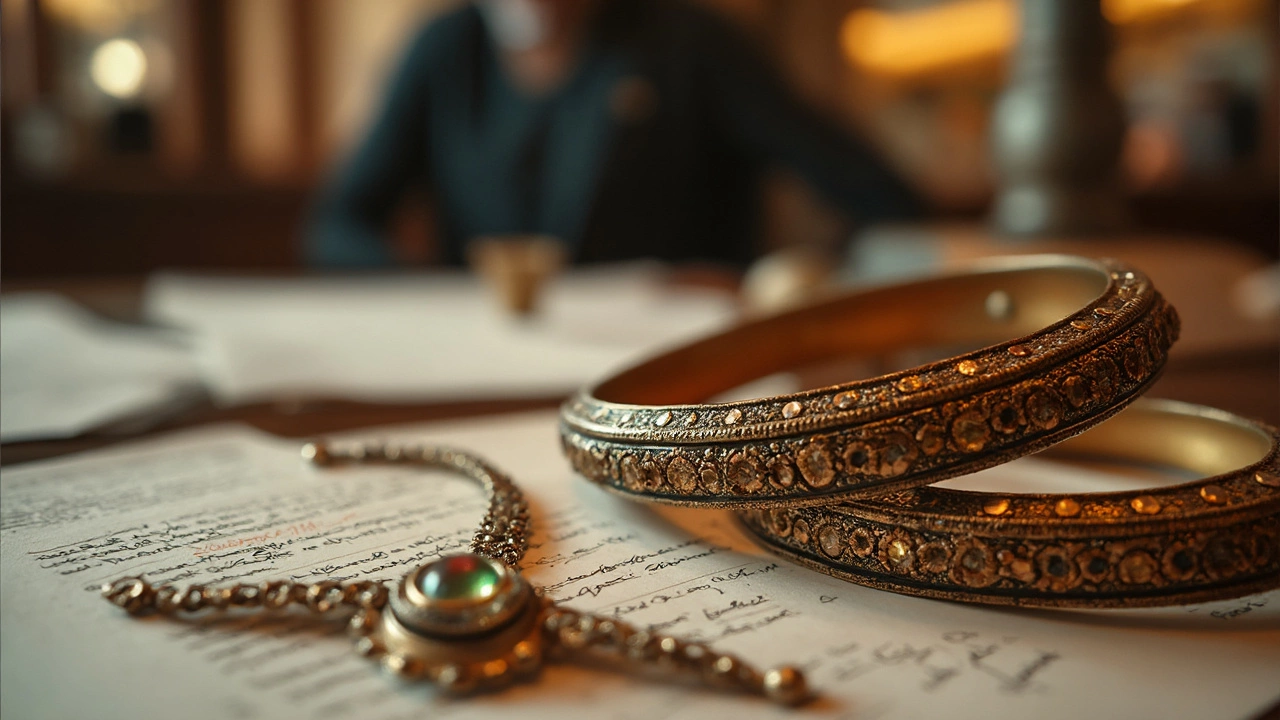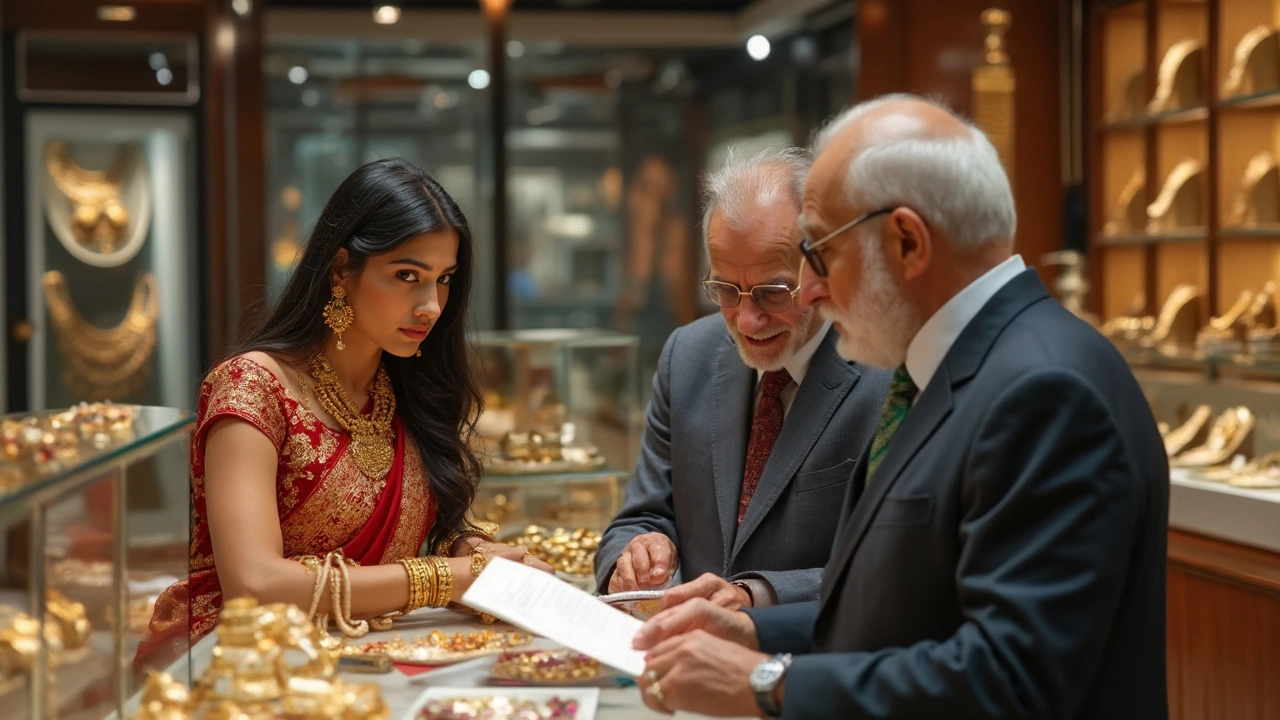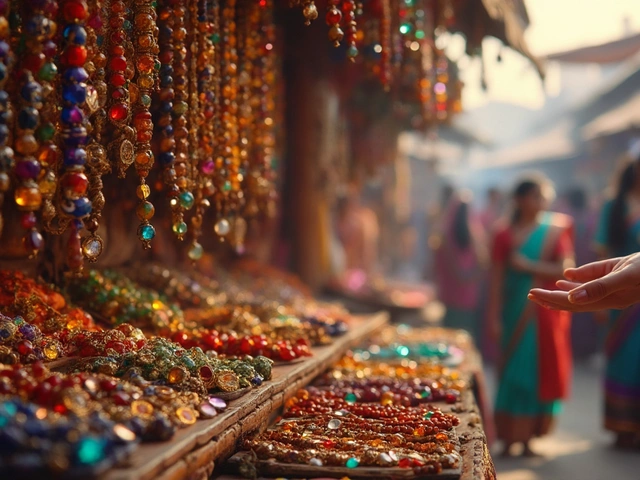A lot of people wonder if Kay Jewelers will buy back their old jewelry—especially when that necklace collecting dust could fund a fun weekend or a splurge for Bruno (my dog, who judges all my spending habits). The answer isn’t as simple as a yes or no.
Here’s the deal: Kay Jewelers does not run a classic buy-back program. You can’t stroll in and swap grandma’s antique brooch for instant cash. Their main offer is a trade-in or upgrade deal. If you originally bought a diamond piece from them, there’s a solid chance you can trade it toward something shiny and new, but only on specific terms. And—before you haul in that vintage ring from the 1920s—there’s a big catch: the jewelry usually has to be from their store, with proof of purchase and paperwork intact.
That makes a big difference if you’re hoping to sell antique jewelry or pieces you inherited. Before getting your hopes up, it’s smart to understand Kay’s limited buy-back setup and check if your sentimental or antique pieces fit their rules. Don’t expect to get cash in hand for just anything. Let’s clear up the details and see what real options you’ve got.
- Kay Jewelers and Their Buy-Back Policy Explained
- What Counts as 'Eligible' Jewelry?
- How Trade-In Programs Really Work
- Antique Jewellery: Does Kay Care?
- Tips for Getting the Most Value
- Smart Alternatives Outside Kay
Kay Jewelers and Their Buy-Back Policy Explained
If you walk into Kay Jewelers thinking they’ll hand you cash for just any old ring or necklace, you’ll want to hit pause. The critical thing to know: Kay does not have a standard buy-back program. What they do offer is a trade-in or upgrade service, and it only covers certain pieces.
So how does it work? Most major jewelry chains—Kay included—stick to a diamond trade-in policy. According to Kay’s official site, you can trade in your diamond jewelry purchased from them for new diamond jewelry (as long as the new piece costs at least double). Here’s the exact line Kay uses:
"You may trade in your diamond* jewelry purchased at Kay Jewelers for a new diamond* jewelry purchase valued at least double your original purchase price."
Keep in mind, the asterisk “diamond” means lab-created and natural diamonds are included, but some collections aren’t eligible. No rubies, sapphires, or antique gold here—this is about diamond jewelry only.
Here’s what Kay’s trade-in process looks like:
- The jewelry must’ve been bought from Kay and you’ll need your original receipt or proof of purchase.
- The main gemstone has to be at least 1/4 carat.
- Minor damage can sometimes be overlooked, but anything broken or missing stones will get turned down fast.
- You can’t get cash—only in-store credit toward a pricier diamond piece.
If you’re sitting on a family heirloom or something bought elsewhere, Kay’s policy doesn’t offer much help. The policy is strict, and there are no hidden loopholes. "We do not offer cash buybacks," an official Kay customer service rep told Good Housekeeping in 2023. You trade up, or you keep it—that’s the deal.
It’s simple: Kay’s focus is on selling and having you upgrade, not buying back diamond or antique jewellery for cash. Knowing these rules upfront saves you a frustrating trip or a letdown at the counter.
What Counts as 'Eligible' Jewelry?
So, which pieces will Kay actually take back under their trade-in program? It's way more specific than most folks expect. Only jewelry with diamonds purchased directly from Kay is considered. If your piece is missing its original paperwork or wasn’t bought new at Kay, you’re out of luck.
Here’s what counts as eligible jewelry for a trade-in or upgrade:
- The jewelry must have been bought at Kay Jewelers originally (no estate pieces, hand-me-downs, or random finds from Aunt Rita).
- The diamond center stone needs to be at least 1/4 carat. Smaller stones or just a diamond accent? Not eligible.
- Pendant necklaces, rings, earrings, or bracelets – as long as the main diamond is big enough and came from Kay.
- You have to provide the original sales receipt or, sometimes, the Kay warranty/service plan.
It doesn't matter if your item is vintage or part of a discontinued line. If it fit these rules and you have the paperwork, it can usually go toward a trade-in. But, anything without documentation, or non-diamond jewelry like gold chains or antique gemstone rings, won’t fly.
If you’re curious about what makes diamond jewelry eligible for Kay’s programs, this simple breakdown might help:
| Requirement | Kay Trade-In Eligible? |
|---|---|
| Bought directly from Kay? | Yes |
| Has the original receipt? | Yes |
| Diamond main stone at least 1/4 carat? | Yes |
| Antique/different brand, even from the same mall? | No |
| Loose diamonds (not set in jewelry)? | No |
| Gemstone pieces or plain gold? | No |
If you walk in with, say, an old gold chain or a sapphire brooch, most Kay employees will politely tell you there’s nothing they can do. If you’ve got a Kay Jewelers diamond ring (with receipt), that’s your golden ticket for a trade-in discussion. Save yourself a trip if your piece doesn’t fit these picky standards.
How Trade-In Programs Really Work
The trade-in deal at Kay Jewelers is all about swapping what you already bought from them for a new piece—usually something pricier. Here’s what actually happens: you bring in the ring, necklace, or bracelet you previously purchased at Kay, and after an inspection, they’ll figure out how much store credit it’s worth. You then use that credit right away for a new purchase that must cost at least double the price of your trade-in.
One key thing: trade-ins only work for diamond jewelry you bought at Kay. Forget about pearls, gold chains, watches, or antique pieces from other places—they won’t qualify. Your jewelry will need a receipt or the original paperwork. No proof, no deal. If there’s visible damage, missing stones, or custom alterations, the value drops or they might just say no.
- You get store credit—never cash—and it’s good only for a same-day purchase.
- The new piece must be double or higher in value compared to your trade-in.
- Lab-created diamonds are a no-go for their program.
- The process usually includes a quick on-the-spot inspection.
Here’s a snapshot of how most people fare with the Kay trade-in:
| Type of Jewelry | Eligible for Trade-In? | Trade-In Value (Average) |
|---|---|---|
| Kay diamond ring (natural) | Yes | 40%-60% of original purchase price |
| Gold necklace (no diamond) | No | N/A |
| Lab-grown diamond stud | No | N/A |
| Estate/antique (not from Kay) | No | N/A |
Don’t expect to trade in something that’s been heavily worn or damaged—the staff will spot cracked stones or serious wear in seconds. If your diamond piece qualifies, don’t forget that your store credit is locked to that day, so show up ready to make your pick. If you hoped to use their program to cash out, you’re out of luck—store credit is all you’ll get. For folks upgrading engagement rings or diamond earrings, the trade-in can make sense if you’re already planning to spend a good bit more.

Antique Jewellery: Does Kay Care?
Here’s where things get tricky if you’ve got antique jewellery that didn’t come from Kay Jewelers. Maybe your grandma’s Art Deco diamond ring or a Victorian locket is burning a hole in your jewelry box. Truth is, Kay’s policies are kind of strict. They only consider trade-ins or upgrades if the piece was originally bought at their store, and it almost always has to come with the original sales slip and all the paperwork. If it’s missing—even if you have a credible story—they’re usually going to say no.
This means that most antique jewellery, especially anything you inherited or picked up at an estate sale, won’t qualify for the trade-in or buy-back programs. Kay also doesn’t evaluate the historical value or craftsmanship that makes antique pieces special. Their trade-in value is usually based only on the diamonds and the gold’s current worth, not the rarity or design.
If you want real numbers, Kay tends to apply their trade-in programs just to diamond jewellery with at least double the value of your original purchase. Custom, designer, or aged pieces don’t really get recognized unless they’re from their own recent collections. Here’s a quick table breaking it down:
| Jewelry Type | Eligible for Kay Trade-In | Notes |
|---|---|---|
| Diamond Jewelry (from Kay, with receipt) | Yes | Must be higher value than original |
| Antique/Vintage (not from Kay) | No | Not accepted—even high-value pieces |
| Gold/Silver (no diamonds) | No | They don’t buy gold or silver outright |
| Designer Brands (not Kay) | No | Excluded from program |
| Loose Stones | No | Only finished, set jewelry considered |
So, if your main goal is to cash in on a unique or rare older piece, Kay’s not the store for that. Antique jewellery owners are usually better off getting pieces properly appraised by a specialist, then going to an auction house, certified antique dealer, or online marketplace where the real history and design matter. This is how you get the true, sometimes surprising value that just doesn’t show up on the Kay sales floor.
Tips for Getting the Most Value
If you’re thinking about parting ways with your jewelry at Kay Jewelers, don’t just show up and hope for the best. You want to walk in knowing how to maximize what you get back. Here’s how to stack the odds in your favor, straight-up and practical:
- Kay Jewelers only accepts trade-ins for diamond jewelry that was bought from one of their stores. If you didn’t buy directly from them, or if you’re holding onto antique jewelry, this usually isn’t going to fly. Always save your receipt and the original grading certificate—it makes the entire process smoother.
- Condition matters a ton. Clean your jewelry before heading to the store. No one wants to trade in a ring covered in grime from last year’s barbecue. A quick polish can actually bump up how your piece is valued in-store.
- Understand the trade-in value. Don’t expect to get back what you paid; Kay typically gives trade-in credit toward a new purchase only, and the piece must be worth at least double the value of your old one. That means if your original ring was $1,000, you’ll need to pick a new piece worth $2,000 or more.
- Timing can affect value. If gold prices are high or diamonds are especially in demand, your trade-in could be worth a little more in-store credit—even though Kay uses their own pricing system. Compare what they offer with what local jewelers or online marketplaces quote you.
- Bring paperwork—seriously. Certificates, receipts, original boxes, and warranty info can help prove authenticity and condition. The staff will usually look for these, especially with higher-ticket items.
Here’s a quick look at how major jewelry stores handle trade-ins (data from 2024):
| Store | Trade-In Credit? | Buy Back for Cash? | Original Receipt Needed? | Diamond Only? |
|---|---|---|---|---|
| Kay Jewelers | Yes, toward new purchase | No | Yes | Yes |
| Jared | Yes, toward new purchase | No | Yes | Yes |
| Zales | Yes, toward new purchase | No | Yes | Yes |
| Local Jeweler | Maybe | Maybe | Not always | No |
Don’t just rely on one quote. Before agreeing to anything at Kay, see what you can get through an independent appraiser or from online buyers, especially if your piece is truly antique. Sometimes local jewelers are more flexible, and auction sites let rare designs shine (and fetch more money). It’s all about running the numbers and making sure you’re not leaving value—or stories—behind.
Smart Alternatives Outside Kay
If Kay Jewelers isn’t the right fit for selling your jewelry—or if your piece is antique, rare, or just not from Kay—don’t stress. There are actually a bunch of solid options that could get you more money or better outcomes. Here’s what really works in 2025:
- Local Jewelers: Independent shops often have more flexible buy-back programs. They’ll usually look at the true value of antique pieces and might be open to negotiation.
- Specialized Antique Dealers: If your jewelry is old or has a unique story, antique dealers know what’s hot and what collectors pay for. They appraise and sometimes even auction rare items.
- Online Jewelry Marketplaces: Places like Worthy, The RealReal, or even eBay let you reach buyers looking for something specific. You often set your price or use an auction format.
- Pawn Shops: You’ll get a quick offer, but typically less than other options—good for fast cash, not for maxing out value.
- Gold Buyers: If your jewelry isn’t that special (no rare stones or family history), gold buyers pay based on weight and current gold prices.
If you want to be smart about selling antique jewelry or any unique piece, get it appraised first. An appraisal with recent data helps you know the real value, which means you don’t accidentally let something rare go for peanuts.
Here’s a quick comparison of typical payout rates for each option—based on recent 2024 surveys in the US:
| Alternative | Typical Payout (% of appraised value) | Turnaround Time |
|---|---|---|
| Local Jeweler | 60% – 80% | 1–7 days |
| Online Marketplace | 70% – 90% | 7–21 days |
| Antique Dealer | Up to 100% (sometimes more at auction) | 7–30 days |
| Pawn Shop | 30% – 50% | Immediate |
| Gold Buyer | 50% – 70% | Same day |
Avoid places that pressure you or won’t explain their offer. Always read reviews, ask friends, or check their BBB score before dropping off your ring or necklace. And if you’re unsure about a piece, especially antiques, consider consulting two or three experts before selling.
Bottom line: getting the best deal isn’t just about walking into the nearest store. It’s about knowing your options, talking to the right people, and not being afraid to shop around for offers that respect the story—and the real value—behind your jewelry.



